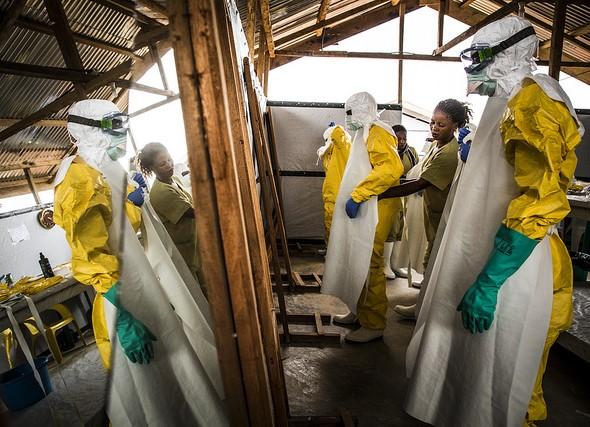An ongoing surge of Ebola cases in the Democratic Republic of the Congo (DRC) saw another double-digit rise today, with 15 new cases, the health ministry said in its daily update.
In other developments, a US research team announced yesterday it has received Food and Drug Administration (FDA) clearance to use animal models in its development of remdesivir, one of the experimental treatments being used to treat patients in the DRC outbreak.
Infections push total to 1,059
All of the 15 newly confirmed cases are from the main epicenters and other smaller hot spots that have recently reported cases. Five are in Vuhovi and 4 in Katwa, and three locations each have 2 cases: Mandima, Oicha, and Beni.
The infections boost the country's overall case total to 1,059, including 993 confirmed and 66 probable cases. Yesterday the DRC confirmed 14 cases, so today's numbers make it the largest 2-day increase in the history of the outbreak.
Health officials are also investigating 225 suspected Ebola cases.
Also, 8 more people died from their infections, 4 of them in community settings—3 in Katwa and 1 in Vuhovi. Deaths that occur in the community are a concern, because viral levels are highest during the severe stages of illness and at death, raising the risk of further spread in settings where people aren't wearing personal protective equipment.
The other 4 fatalities occurred in Ebola treatment centers, including two in Butembo and two in Beni. The outbreak has now claimed 660 lives.
Remdesivir benefits from FDA Animal Rule
The US Army Medical Research Institute of Infectious Diseases (USAMRIID) said yesterday that for the first time the FDA has allowed the use of the Animal Rule for developing a drug treatment for Ebola. Remdesivir, an antiviral known as GS-5734, is one of four experimental treatments authorized for compassionate use in the DRC's Ebola treatment centers, where clinical trials are under way for three of the treatments, including remdesivir.
In a news release, USAMRIID said a 2018 Ebola natural history study that it conducted in collaboration with Gilead Sciences, the drug's sponsor, paved the way for the Animal Rule agreement. The Geneva Foundation is another collaborator, and the work was funded by the Joint Project Manager for Medical Countermeasure Systems, part of the US Department of Defense Joint Program Executive Office for Chemical, Biological, Radiological and Nuclear Defense.
The FDA agreed that using rhesus macaques infected by intramuscular injection is a relevant and adequately characterized model of Ebola infection to support filing under the FDA Animal Rule, designed to apply to the drug approval process when human efficacy trials are not feasible or ethical.
As part of the agreement, the FDA said the rhesus monkey model is sufficient as a single-animal model for drug development and that a specific delayed time-to-treat approach is appropriate for future nonclinical studies to assess remdesivir's efficacy.
Col Gary Weaver, USAMRIID commander, said that, over the years, Ebola countermeasures have been subject to regulatory uncertainties regarding which models, if any, would be acceptable to the FDA for evaluating efficacy under the Animal Rule.
"The study design and data-quality posture USAMRIID adopted for the Ebola virus NHS sets a precedent that has the potential to be useful for medical countermeasure development efforts targeting other similar human pathogens, such as Marburg or Sudan viruses," he said.
See also:
Mar 29 DRC update
Mar 28 USAMRIID news release


















